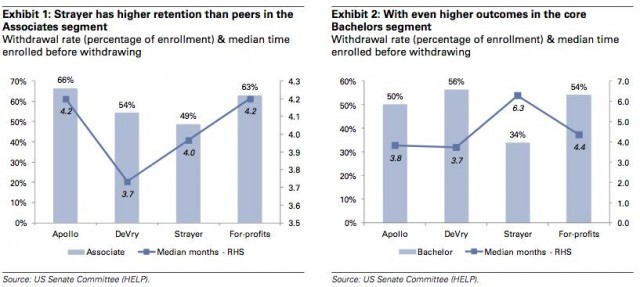For-Profit Colleges Still Terrible
Senator Tom Harkin, an Iowa Democrat who is chairman of the Senate Health, Education, Labor and Pensions Committee, recently wrapped up a two-year investigation on for-profit colleges and released his findings in what is being called the Harkin Report. The Times has a summary of the report, which condemns for-profit colleges for taking billions of dollars from taxpayers in the form of federal student aid, and aggressively recruiting students who quickly drop out, or find themselves deeply mired in debt by the time they graduate. The majority of these colleges are owned by publicly traded companies and private equity firms, which appear to be more focused on their bottom line than educating people and preparing them for the American workforce.
Some points from the report:
• Half of students who enroll in for-profit colleges leave without a degree within four months
• Where the revenue goes among the 30 companies evaluated: 22.4 percent goes to marketing and recruiting, 19.4 percent goes to profits, and 17.7 percent goes to instruction.
• An average of $2,050 was spent per student on instruction in 2009 at for-profit schools. Not-for-profit colleges spend more on its students because they’re not retaining any money to pay investors. For example, Portland Community College in Oregon spent $5,953 per student in 2009.
• 80 percent of for-profit college’s revenues come from taxpayers.
• Tuition increases appear to depend on profit and not instructional costs. From the Times: “An internal memo from the finance director of a Kaplan nursing program in Sacramento, for example, recommended an 8 percent increase in fees, saying that ‘with the new pricing, we can lose two students and still make the same profit.’”
• Students at for-profit colleges make up 13 percent of all enrolled students in the country, but make up nearly half — 47 percent — of people who default on their student loans.
• In 2009, the president of Strayer Education made $41 million, including stock options. In comparison, Harvard president Drew Faust earned $822,000 in 2009.
Interestingly, I was anonymously sent a Goldman Sachs “equity research” report sent to investors that has tried to soften the criticism of for-profit schools, specifically, Strayer Education, whose president earned all those millions. From the Goldman Sachs report:
APOL, DV, and STRA shares each saw mid-single-digit percentage declines Monday after the report’s calls for more regulation, though we note the actions mostly require Congressional action, limited by the Republican majority in the House. Among our covered companies, the report indicated Apollo has the most work to be done to improve outcomes, DeVry is doing better than most in engaging in steps to improve, while Strayer was viewed as already giving students a quality experience.
And then they have these charts showing that Strayer is basically the best house in a terrible neighborhood:

Support The Billfold
The Billfold continues to exist thanks to support from our readers. Help us continue to do our work by making a monthly pledge on Patreon or a one-time-only contribution through PayPal.
Comments